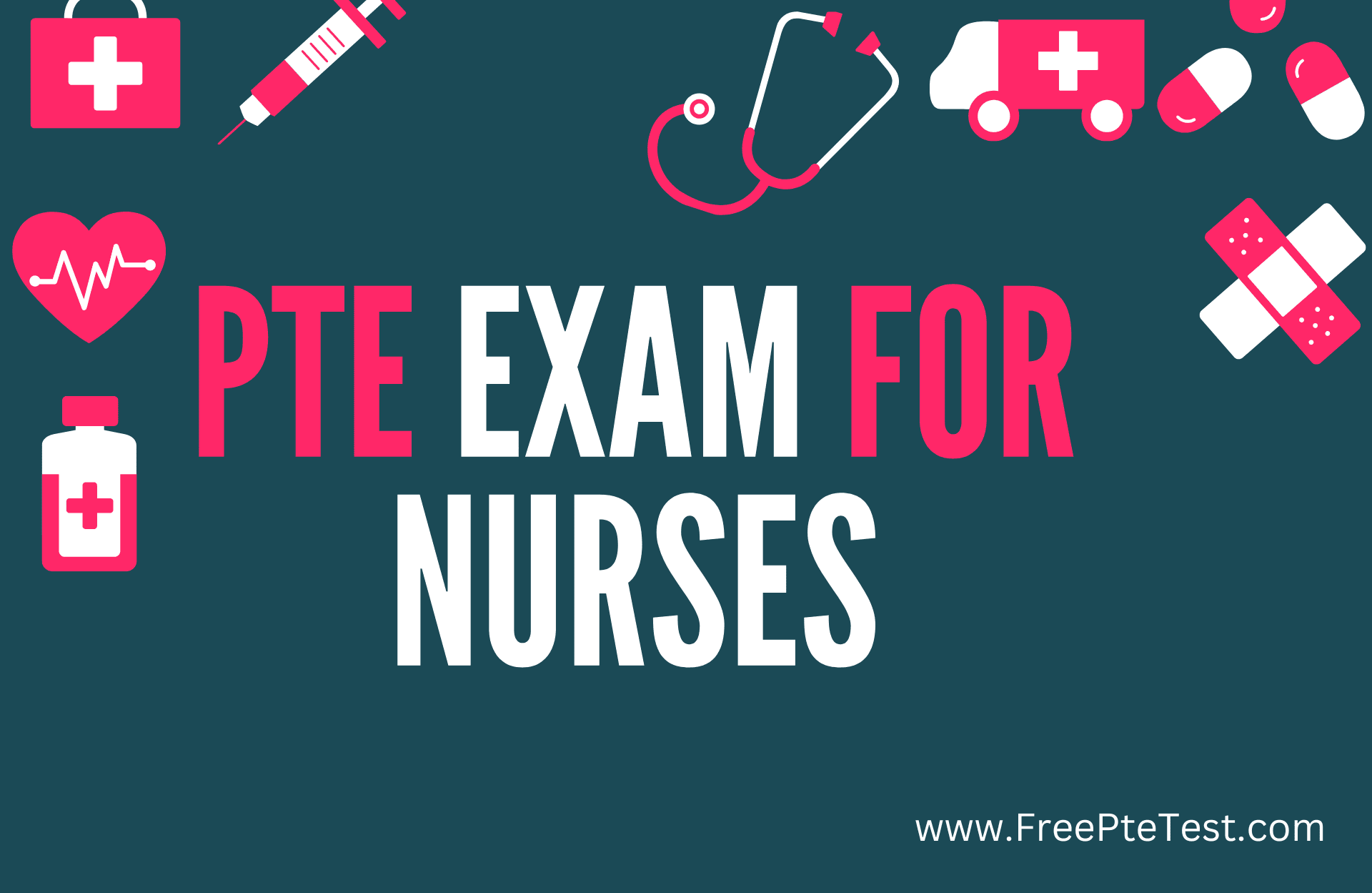In the dynamic landscape of healthcare, PTE Exam for Nurses is becoming high in demand for skilled nurses in the United States has never been higher. While the International English Language Testing System (IELTS) and Test of English as a Foreign Language (TOEFL) are widely recognized, the Pearson Test of English (PTE) has emerged as a viable alternative.
This blog explores the states in the U.S. that accept PTE for nurses, offering a comprehensive guide for those seeking to navigate the regulatory landscape and unlock promising opportunities.
Understanding PTE:
The Pearson Test of English (PTE) is a computer-based English language proficiency exam designed to assess a candidate’s listening, reading, speaking, and writing skills.
States Accepting PTE for Nurses:
New York:
- The state of New York recognizes PTE scores for nursing licensure.
- New York’s Nursing Board acknowledges the equivalency of PTE with other accepted English language proficiency tests.
California:
- The California Board of Registered Nursing (BRN) accepts PTE scores for foreign-educated nurses seeking licensure. The scores are considered alongside other application requirements.
- Applicants must meet specific score requirements in each PTE module, ensuring a well-rounded proficiency in all language skills.
Texas:
- Texas, with its high demand for healthcare professionals, allows PTE scores for nursing licensure. Nurses must meet the minimum score requirements to be eligible for the application process.
- The Texas Board of Nursing provides detailed information on PTE score expectations, enabling applicants to prepare adequately.
Florida:
- Florida’s Board of Nursing accepts PTE scores, offering international nurses an alternative pathway to demonstrate their English language proficiency.
- Applicants must ensure their PTE scores align with the state’s requirements, and the scores must be sent directly from the testing center to the Board.
Illinois:
- The scores are part of the comprehensive assessment conducted during the licensure application process.
- Illinois emphasizes the importance of achieving balanced scores across all PTE modules.
New Jersey:
- The scores are evaluated along with other application materials.
- The New Jersey Division of Consumer Affairs provides guidelines on the specific PTE score requirements for licensure.
Benefits of PTE for Nurses (Approx. 300 words):
Efficiency and Convenience:
PTE’s computer-based format allows nurses to take the test at their convenience, providing flexibility in scheduling and eliminating the need for a separate speaking test.
Global Recognition:
PTE is recognized by various institutions and organizations worldwide, showcasing its global acceptance and credibility in assessing English language proficiency.
Conclusion:
For international nurses aspiring to work in the United States, the acceptance of PTE scores by certain states opens doors to a smoother licensure application process. As the demand for healthcare professionals continues to rise, these states recognize the value of a diverse workforce and have embraced PTE as a reliable measure of English language proficiency.
Aspiring nurses should carefully review the specific requirements of each state and prepare thoroughly for the PTE to ensure they meet the standards set by nursing boards.
By understanding the states that accept PTE for nurses and leveraging this knowledge, international healthcare professionals can embark on a fulfilling journey in the vibrant and diverse landscape of U.S. healthcare.
FAQs on Pte Exam for Nurses:
Q1: What is the PTE exam, and why is it relevant for nurses aspiring to work in the United States?
The Pearson Test of English (PTE) is a computer-based English language proficiency test that assesses a candidate’s listening, reading, speaking, and writing skills. It is relevant for nurses aspiring to work in the United States as it is accepted by certain states as proof of English language proficiency, a requirement for nursing licensure.
Q2: Which U.S. states accept PTE scores for nursing licensure?
Several U.S. states accept PTE scores for nursing licensure, including New York, California, Texas, Florida, Illinois, and New Jersey. These states recognize PTE as an alternative to other English language proficiency tests such as IELTS and TOEFL.
Q3: How can nurses verify the PTE requirements for a specific state?
Nurses can verify the PTE requirements for a specific state by checking the official website of the respective state’s nursing board or regulatory authority. These websites typically provide detailed information on the licensure application process, including specific requirements for English language proficiency.
Q4: Can PTE scores be submitted directly to nursing boards, or is there a specific process for sending scores?
The process for submitting PTE scores varies by state. In most cases, nurses need to request that their PTE scores be sent directly from the testing center to the state’s nursing board. It’s essential to follow the specific instructions provided by each state’s regulatory authority.
Q5: Are there minimum score requirements for PTE in states that accept it for nursing licensure?
Nurses should carefully review these requirements, ensuring that they achieve the minimum scores in each PTE module (listening, reading, speaking, and writing) as outlined by the respective state’s nursing board.
Q6: How quickly can nurses expect to receive their PTE scores, and why is this important for the licensure process?
PTE typically delivers results within five business days. The quick turnaround time is crucial for nurses as it allows them to expedite the licensure application process.
Q7: Can international nurses use PTE scores for purposes other than nursing licensure in the U.S.?
Yes, international nurses can use PTE scores for various purposes beyond nursing licensure in the U.S. PTE is widely recognized for academic and professional purposes globally, making it a versatile tool for language proficiency assessment in different contexts.
Q8: Is there a specific emphasis on achieving balanced scores across all PTE modules?
Yes, many states that accept PTE for nursing licensure emphasize the importance of achieving balanced scores across all PTE modules.
Q9: Are there any resources or study materials specifically tailored for nurses preparing for the PTE exam?
While there may not be nurse-specific PTE study materials, nurses can utilize general PTE preparation resources available online. These resources include practice tests, study guides, and tutorials that cover the four language skills assessed in the PTE exam.
Q10: Can PTE scores expire, and what should nurses do if their scores are no longer valid?
PTE scores typically have a validity period, usually two years. If a nurse’s PTE scores have expired, they may need to retake the exam and submit new, valid scores when applying for licensure. It’s crucial to check the specific expiration policies of the state in which the nurse intends to practice.



